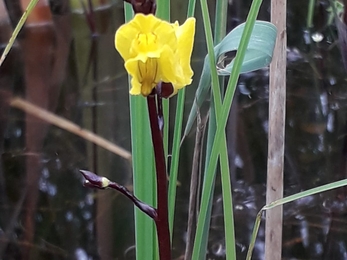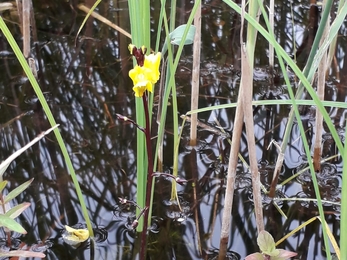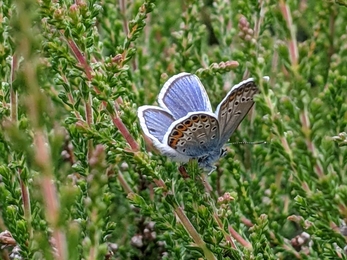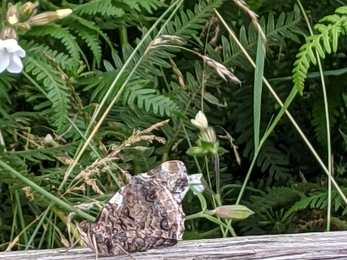Weekly wild news from our reserves - 16 July 2021
Seine netting for fish survey at Hazlewood marshes
The Bladderworts, or Utricularia, as photographed by Debs Crawford at Redgrave & Lopham Fen Nature Reserve this week, are the largest group of carnivorous plants. The bladders, or traps, are hollow underwater structures with a flexible door or valve that is kept closed. A physiological process moves water from the interior to the exterior of the bladders, generating a state of low pressure within the traps. If a small animal triggers the bristles that project from the surface of the door, the trap suddenly opens, and a quick inflow of water sucks the prey inside. The door closes and the animal is digested. Within about 15 to 30 minutes the trap again is “set” by passing water to the exterior. In nutrient-poor environments, in nutrient-poor environments, this strategy affords bladderwort a source of organic nitrogen and phosphorus and may also provide carbon beyond that which is produced photosynthetically. Research suggests that bladderworts may form symbiotic relationships with microorganisms around the bladders, possibly to aid in the attraction and enzymatic digestion of prey.
Roe Deer
Phone cameras are so good these days even the video quality is good enough to capture decent footage of those shy species with incredible senses which are often difficult to get close to. Nice film work at Knettishall Heath, Sam!
Roe deer at Knettishall Heath, Sam Norris (https://youtu.be/lN62tU_ZmFE )
Roe deer at Knettishall Heath, Sam Norris
Dreaming of true love
With its papery petals and delicate appearance, you might think the harebell a rather fragile wild flower. In fact, it's incredibly tough, resilient and attractive to all kinds of insects, too. It needs to be given the environment it grows in: the harebell is a wild flower of dry, open places like Knettishall Heath Nature Reserve where this photograph was taken during the week. The harebell is called the bluebell of Scotland. It is also known as the ‘cuckoo's shoe’, ‘witch bells’ or ‘old man's bell’ - the 'old man' being the devil himself. Look very closely at the image, remember the colours, shapes and detail of those azure petals - dreaming about harebells is said to symbolise true love.
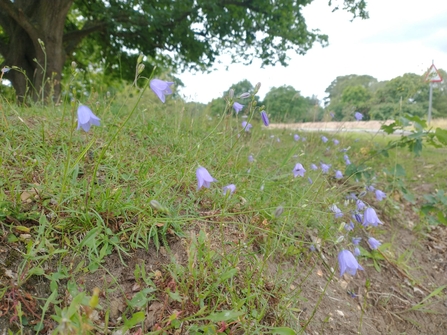
Harebells, Sam Norris, Knettishall Heath
Ants nest at Foxburrow
Gabby King, our Reserves Intern, found this maze-like structure of an ants nest built between two boards at Foxburrow Farm. You can see the ant eggs in the top left corner.
Ants nest at Foxburrow Farm, Gabby King
Pyramidal orchids
Ben Calvesbert, our Meadows and Heaths Warden, reported that it has been a very good year for pyramidal orchids at Martin’s Meadows with over 700 flower spikes counted by our volunteer warden and his team.
Small fish survey training at Hazlewood Marshes
South East Suffolk Sites Manager Andrew Excell organised a day’s training with fish expert Steve Colclough to teach members of our reserves team as well as volunteer surveyors from the River Deben how to net juvenile fish, identify species and measure and record their size. Saltmarshes and estuaries are extremely important fish nurseries and citizen science data is needed to help gather information to determine how fish are using these areas as prime feeding areas, breeding sites and protection from predators. We’ll write more about this in a news story on our website soon, and you will be able to find out how to take part if you’d like to help, too.
Butterflies at Blackheath
Jamie Smith, our Coastal Warden, spotted some lovely butterflies this week at Blackheath Common including this beautiful silver-studded blue and grayling.


